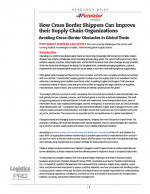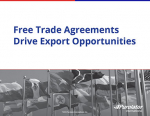Does Your Apparel Supply Chain Need a Logistics Makeover?
Today’s manufacturers face seemingly competing challenges to meet customer expectations for fresh inventory offered via multiple platforms while relying on increasingly global supplier networks.
Customers have grown accustomed to the ease and convenience of online shopping, and they expect apparel retailers to do whatever it takes to meet those expectations.
Easier said than done. These changing expectations come at a time when apparel companies’ supply chains are more globally sourced than ever, with 60 percent of companies sourcing materials from more than 10 countries or regions. For most apparel makers, this includes suppliers located in China as well as Vietnam.
Sprawling supply chains have helped create long lead times – currently it takes as long as 15 months to bring a new concept to market.
An added concern includes threats of increased trade restrictions between the United States, China, and other nations. Both China and the United States have proposed new tariffs on goods traveling between the two countries, which could significantly drive up the cost of fabrics and other apparel-related materials. The threat of trade barriers has become so significant that the U.S.
Fashion Industry Association’s 2017 industry benchmark study saw “protectionist trade policy agenda in the United States” jump from the 10th “top business concern” during 2016 to the number one concern in 2017.
What’s Related




Favorites





